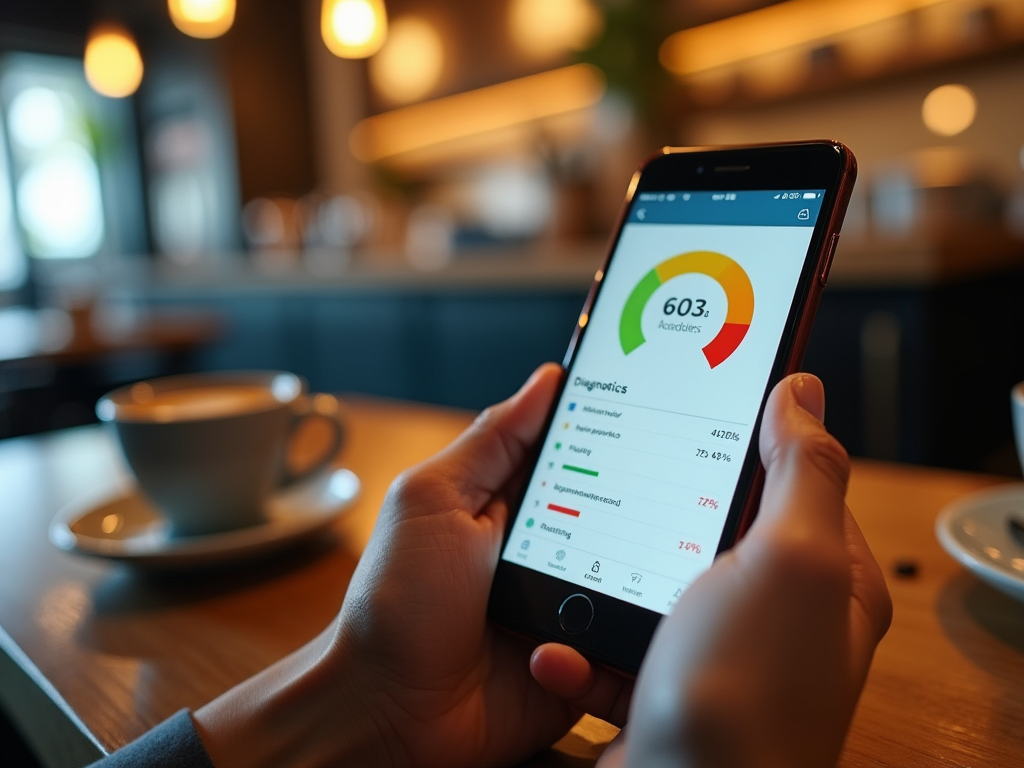In today’s fast-paced world, our cellphones are more than just communication devices; they are an integral part of our daily lives. Electronics come loaded with features that enhance productivity, entertainment, and connectivity. However, with this complexity also comes the chance for problems to arise. Whether it’s a software glitch, connectivity issue, or a hardware malfunction, running diagnostics can be a game changer. This article will take you through the essential steps to diagnose your cellphone effectively, ensuring it performs at its best. By understanding the diagnostic tools available to you, you can save time and potential repair costs down the road.
Understanding Cellphone Diagnostics

Modern cellphones are equipped with various capabilities that enable users to identify issues quickly and accurately. The availability of diagnostic tools means that you can troubleshoot problems without relying solely on professional help. These tools check both hardware and software components, providing users with a detailed overview of the phone’s health. In this digital age, understanding how to utilize these features empowers you to make informed decisions regarding your device. This is particularly crucial as issues may not always present themselves immediately but can manifest in performance lags or app failures. By regularly checking, you ensure that your cellphone remains in optimal condition.
Why Run Diagnostics on Your Cellphone?

Running diagnostics provides various benefits that enhance your experience with your device. Some of the primary reasons include:
- Identifying hardware problems, such as battery issues or screen defects.
- Diagnosing software problems that may affect performance, such as app crashes or slow response times.
- Making sure your device is functioning optimally, ensuring you get the most out of your investment.
- Detecting connectivity issues that can hinder your ability to make calls or use mobile data effectively.
- Keeping your operating system and applications in check for any irregularities.
Types of Diagnostics Available
In this digital era, various types of diagnostics can be employed on your cellphone, depending on the make and model. Understanding these types can inform you about what issues you may address independently. Here are the primary categories:
Built-in Diagnostic Tools
Many smartphones come with built-in diagnostic tools. These can typically be accessed through the settings menu, allowing for a quick check of your device’s health. Utilizing these options often provides a simple and effective way to identify potential issues. The tools can test components like the screen, battery, and sensors, all from the comfort of your settings. As they often don’t require downloads, they’re a convenient first step in diagnosing issues. Additionally, these tools can help rule out hardware problems before seeking professional help.
Third-Party Diagnostic Apps
If built-in diagnostics are inadequate or absent, numerous third-party applications are available. These apps offer a more comprehensive suite of diagnostics to help troubleshoot issues. They provide features such as stress tests, detailed battery analysis, and connectivity tests. Here’s what to look for when choosing a third-party app:
- A high user rating and positive reviews
- Compatibility with your cellphone model and operating system
- Availability of features that pertain to your specific concerns
How to Access and Run Diagnostics
Now that you understand the importance of diagnostics, let’s dive into how to access these tools. The process differs slightly between Android and iOS devices, each having their own unique paths and options.
On Android Devices
For Android users, the steps generally involve:
- Open Settings: Access the settings menu from your home screen or app drawer.
- Search for Diagnostics: Look under the device care or battery sections in the settings.
- Run Diagnostics: Follow the prompts provided to test various components like battery health, display quality, and general connectivity.
On iOS Devices
iOS users can conduct diagnostics through the Apple Support app. Here’s how:
- Use Apple Support App: Download and open the Apple Support app from the App Store.
- Select Your Device: Choose your device model within the app.
- Run a Diagnostic: Follow the on-screen instructions to perform a check of your cellphone’s components.
| Diagnostic Tool | Available On | Functionality |
|---|---|---|
| Built-in Diagnostics | Android & iOS | Tests hardware and basic software functionality. |
| Apple Support App | iOS | Comprehensive diagnostics for Apple devices. |
| Third-Party Apps | Android & iOS | Advanced diagnostics and troubleshooting features. |
Interpreting Diagnostic Results
Once you’ve run diagnostics, understanding the results is crucial. Diagnostic tools will provide varying results that indicate the health of your cellphone. The most common outcomes include:
- Pass: Indicates that everything is functioning as expected and needs no action.
- Fail: Suggests that the identified component may require attention, either through repairs or replacements.
- Warning: Alerts you to potential issues that merit further investigation before they escalate.
Conclusion
Running diagnostics on your cellphone is an essential part of maintaining the device’s health. Regular checks can pinpoint issues before they escalate, enabling you to take proactive measures. By integrating this practice into your device maintenance routine, you can significantly enhance your phone’s lifespan and functionality. Knowing how to run these diagnostics equips you with valuable insight into your device’s operational integrity. The result? A smoother, more responsive cellphone freeing you from common frustrations.
Frequently Asked Questions
- What is cellphone diagnostics? Cellphone diagnostics refers to the set of tools and tests used to assess the functionality and health of your device.
- How often should I run diagnostics on my cellphone? It’s recommended to run diagnostics every few months or whenever you notice performance issues.
- Can I fix issues found during diagnostics myself? Some minor issues can be resolved at home, but more significant problems may require professional repair.
- Are there risks associated with running diagnostics? Running diagnostics is generally safe and poses little risk to your device. However, be cautious with tools that require rooting or jailbreaking.
- Do all smartphones have built-in diagnostics? Most modern smartphones come with some form of built-in diagnostic tools, though the functionality may vary by model and manufacturer.


